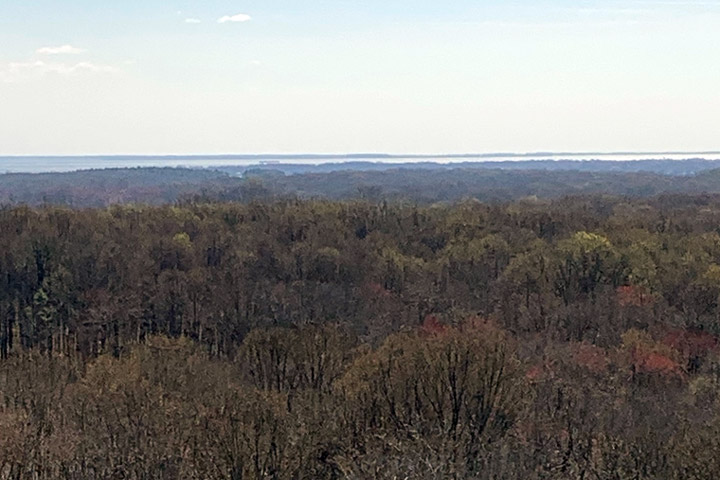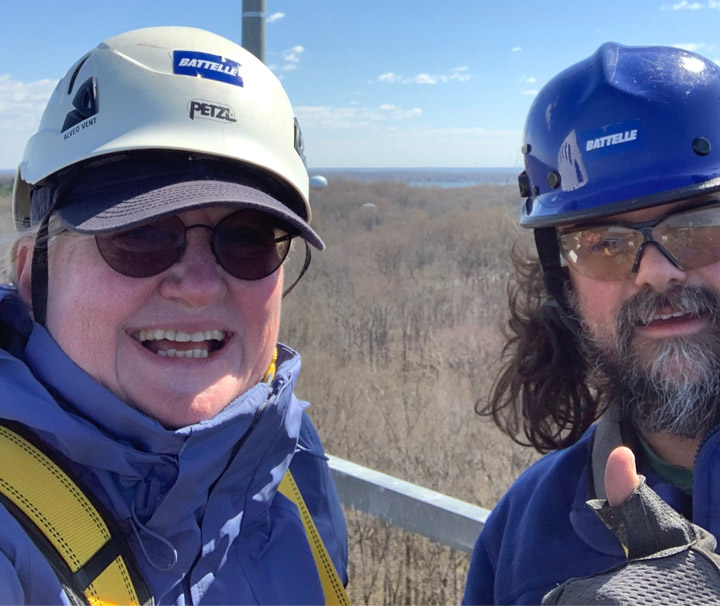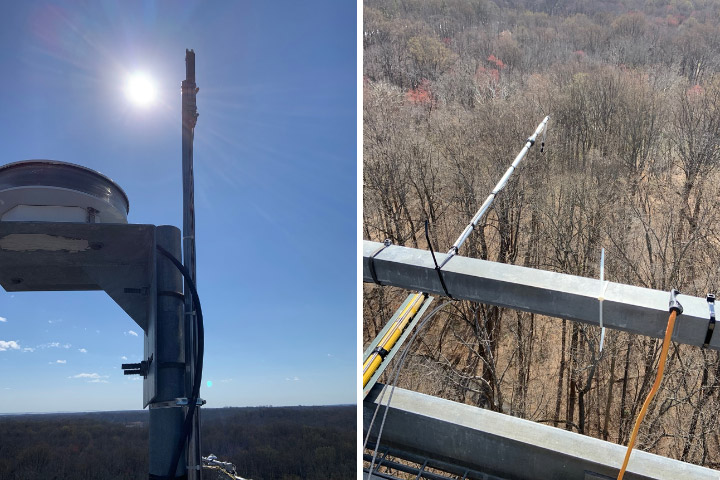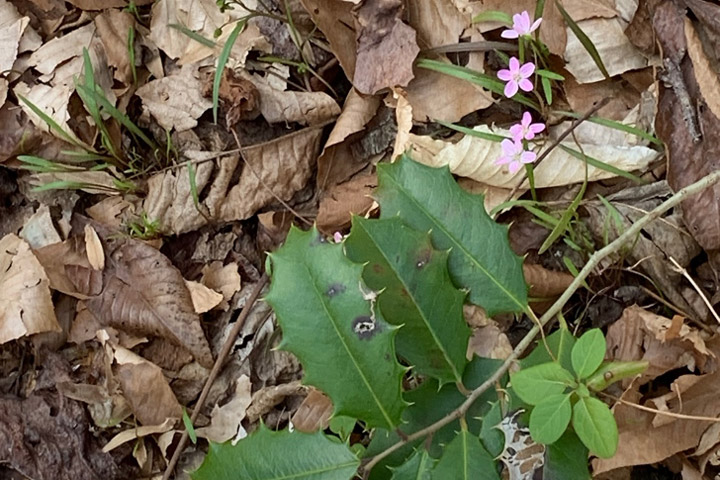
On a blustery March morning, Petya Campbell stood atop a 204-foot-tall tower and looked across the waving canopy of the leafless deciduous forest at the Smithsonian Environmental Research Center in Edgewater, Maryland. This forest is predominately tulip poplar (Liriodendron tulipifera), and the tower extends over trees that are over 120 feet tall.
Petya, from the University of Maryland Baltimore County and NASA Goddard Space Flight Center, is working with Greg Cain, a master technician from the Battelle-managed National Ecology Observatory Network (NEON)—the U.S. National Science Foundation-funded program that runs the tower at the Smithsonian site (SERC). Petya and Greg were on the tower that day to install a new type of instrument, an automated spectrometer called a NoX (Near Infrared Box). The NoX measures the light reflectance off the forest canopy in hundreds of narrow spectral bands through the visible wavelengths we can see and into the near-infrared bands beyond our vision. The instrument will make these measurements every few minutes throughout the entire growing season.


In addition, NEON runs instruments on this tower that take measurements of the movement of carbon dioxide (CO2) into and out of the forest. CO2 is absorbed from the atmosphere into the trees through photosynthesis, so measuring the amount of CO2 taken up by the plants is a measure of forest productivity. These CO2 flux measurements are collected continuously and reported every half hour.
The time series of spectral reflectance measured by the NoX can provide information about leaf characteristics. For instance, it can tell scientists about the amount of green biomass and chlorophyll in the leaves, which determines the potential productivity of the forest; the amount of other leaf pigments that are used to protect the leaves from damage, which indicate when the trees are under stress; and the amount of water in the leaves, which can be used to detect drought stress.
Researchers will use data from the NoX to gain insight into the functioning of this deciduous forest as it responds to environmental conditions such as hot or cold spells, droughts or rainy periods, and sunny or cloudy days. They will observe seasonal changes from the time the leaves emerge in the spring, through the green of the summer, the changing colors of the autumn, and finally the loss of the leaves at the end of the growing season. Others can watch the forest change through the seasons using the phenocam, a web camera mounted on the tower that regularly takes photographs to monitor the changes in the forest.

Installing the NoX on the SERC tower is just the most recent deployment by Petya Campbell and Fred Huemmrich. Over the past couple of yeavrs, they have installed similar instruments on flux towers in the arctic tundra and boreal forest.
The NoX data will be compared with the tower flux data to develop and test relationships between spectral reflectance and forest productivity and the detection of stress responses under adverse conditions. Understanding these types of relationships and how they may differ between vegetation types and season will aid the development of future NASA missions such as the Surface Biology and Geology (SBG) study, and the Geosynchronous Littoral Imaging and Monitoring Radiometer (GLIMR), which will collect spectral information similar to the NoX over large areas of the Earth.






Such a beauty thank you for sharing the other part of the world!